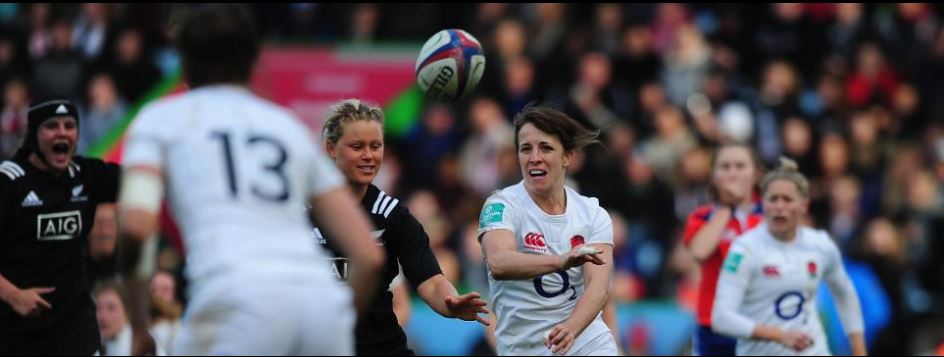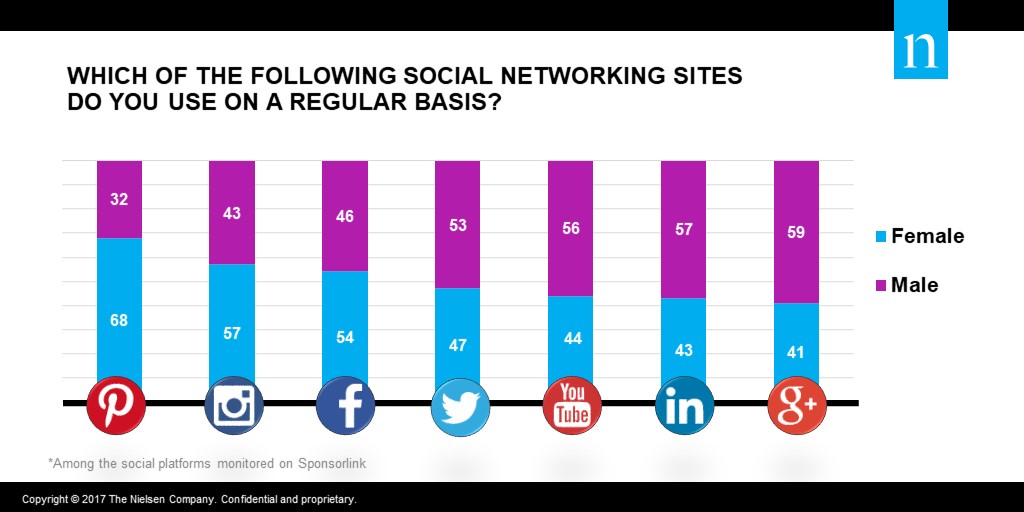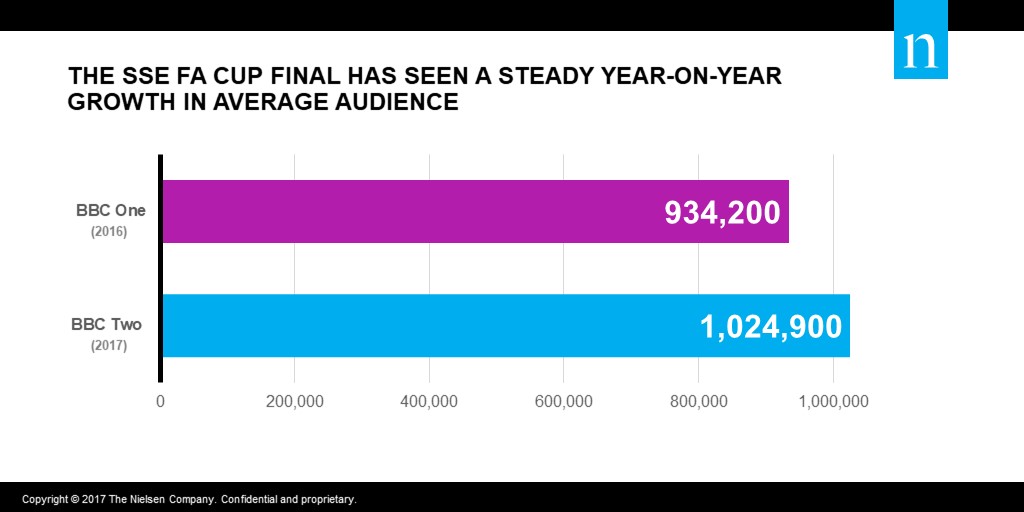Search the latest and greatest job opportunities in sport

To celebrate the UK’s Women’s Sports Week and the superb summer of sport ahead, we asked some of the top female talent at Nielsen Sports UK for their perspective on the growth of women’s sport, the female sports landscape and where the opportunities lie for brands in the space. We’ll be updating this page each day this week with a fresh perspective from a different area of the Nielsen Sports business.
In a developed, mature sports market like the UK, where sport has traditionally been male-dominated, we’re seeing a welcome move towards gender equality. This is a different scenario from that which is playing out in some emerging markets, where men’s and women’s sport is developing at a similar rate but from a low or non-existent starting point.
For UK rights holders, however, there are three main reasons for the increasing attention on and investment in female fans and women’s sport.
The first goes well beyond sport. Like every other sector, there is a growing move for modern sport to be seen as socially conscious and promoting equality, in terms of participation, opportunity, leadership and media attention.
The second is the need for rights holders to grow their property and seek out new revenue streams in an increasingly competitive marketplace, where consumers have all sorts of options for how to spend their time and where to spend their money. In many cases it is women’s sport that has been under-exploited commercially and therefore offers the most potential for growth.
Across the world of sport, we’re seeing rights holders repackaging, relocating and repositioning events, tournaments and leagues. This year’s Women’s Rugby League World Cup, for example, will be the first to be staged alongside the men’s equivalent, with the aim of boosting the tournament’s profile and media reach, while there has been a major marketing focus on the ICC Women’s Cricket World Cup, to be played in England, and August’s Women’s Rugby World Cup in Ireland.
The local organising committee for August’s IAAF and IPC Athletics World Championships in London, meanwhile, have leant heavily on the likes of British athletes such as middle distance runner Laura Muir, heptathlete Katarina Johnson-Thompson and Paralympian Hannah Cockroft.
The investment in entirely new women’s sports events, such as Matchroom Sport’s British Fast5 All-Stars Championship and mass participation initiatives like England Athletics’ ‘This Girl Can Run’, are another healthy sign.
The third trend we are seeing is increasing demand by brands for rights holders to focus on women’s sport and provide access to female fans. This is manifesting itself in all sorts of ways, including the creation of new sponsorship assets and initiatives to help encourage women’s participation in sports. Campaigns like racing driver Susie Wolff’s ‘Dare To Be Different’ initiative, created to inspire, connect, showcase and develop women either working in or aspiring to work in the motorsport world, are proving effective. Famously, Sport England’s ‘This Girl Can’ campaign is another prime example of a strategically targeted initiative to encourage more women to participate.
As we’ve seen in the pieces we’ve posted throughout this week, women’s sport and female fans represent a massive opportunity for brands and rights holders. But to truly understand women, we need women in decision-making roles.
There is still much work to be done, but it is heartening to see female talent rise through the executive ranks across British sport. Role models such as Williams Martini Racing Deputy Team Principal Claire Williams, West Ham United Vice Chairman Karren Brady, new UK Sport Chair Katherine Grainger, England Hockey CEO Sally Munday, Sport England Chief Executive Jennie Price and new British Cycling Chief Executive Julie Harrington clearly play an important role here, but the commitment of all sport’s stakeholders to increasing female representation on boards and in executive positions is critical to ensuring the positive momentum continues.
We live in a world that’s more connected than ever, especially when it comes to viewing live sporting events. With a multitude of platforms available to consumers, there are a wealth of options available to search for results, discuss the latest games and transfers, take in the day’s news and share sports-related video, audio, text and images.
Social media is clearly an essential tool in raising the profile of women’s sport and encouraging greater female engagement. The opportunity for rights holders and brands active in women’s sport is underlined by the fact that, in the UK, more women than men are active users of Facebook and Instagram. With the right type of content, created, tailored and distributed to the right audience, brands and rights holders have the chance to maximise the resonance of their messaging.

Team GB, Britain’s Olympic team, are a great example of an organisation who are reaching a large female audience through digital platforms. Analysis of Team GB’s official Facebook fanbase, shows that 58 per cent are female. We’re also seeing rights holders such as the International Cricket Council (ICC) drive new and innovative social campaigns. The Women’s World Cup is about to be staged in the UK and the ICC’s ‘Who Runs The World’ campaign has just been launched, with the aim of empowering and championing the women’s game ahead of the start of play.
Over the past five years we’ve seen the FA (Football Association) place high value on progressing women’s football. At the 2015 FIFA Women’s World Cup, England’s Lionesses helped inspire a new generation by claiming bronze and finishing 3rd in the competition. After capturing the attention of the nation with their well deserved success, the FA were determined to ensure that all momentum surrounding the women’s game remained, as well as helping create a lasting legacy. The FA publicly announced their strategy to grow the women’s game, centring their plans around three key objectives; doubling participation by 2020, doubling the amount of fans and sustaining consistent success at an international level.
With the women’s game on the rise, we’re seeing increased publicity around the Women’s Super League, driven by both the FA and the clubs. There’s a huge opportunity here for brands to get involved, especially as media and broadcast coverage grows. Clubs are now driving more initiatives to increase women’s participation. Teams like Manchester City, who have multi-purpose facilities in place, at the forefront of developing new talent and providing opportunities for young girls in their local community.
“Women’s football is one of the most exciting sports to be involved in and at Manchester City we’re always looking for innovative ways to engage more people with the game, from creating a memorable matchday experience to collaborating with partners to deliver unique content and campaigns. Last year, we began broadcasting several of our games on Facebook Live making the game even more accessible and we are delighted that our partners, such as Nissan, have teamed up with us to make that viewing experience possible.
“With the growth of the game, a lot of young girls now look up to our Manchester City Women players as role models. As a result we’ve seen female participation in our City in the Community programmes increase and our average match attendances have also grown by 50% year on year since joining the FA WSL in 2014. Last June, we opened our Regional Talent Club, giving us the opportunity to provide aspiring players with a pathway from grassroots to professional women’s football. The future of women’s football is bright and at Manchester City Women we’re delighted to be a part of it.”
Gavin Makel, Head of Women’s Football, Manchester City Football Club
Success will always be one of the key ingredients in helping to secure the status of any sport in any market. Women’s football in the UK is no different. The ‘halo effect’ of the 2015 FIFA World Cup led to wider interest in the women’s game from those who may not previously have followed it. July’s UEFA Women’s Euro, to be staged in the Netherlands and broadcast in the UK by Channel 4, represents another significant opportunity for England and Scotland’s national teams to showcase the sport.

We are seeing increasing evidence of more brands being attracted to the idea of sponsoring female athletes, women’s sports leagues and events in the UK.
In many cases, women’s sport represents a ‘white space’ opportunity: either the property is entirely new, like the FA Women’s Super League, or the women’s competition has not previously been unbundled from the men’s event, as in the case of the FA Cup where energy company SSE acquired the rights to the Women’s competition in 2015 – rights which had traditionally been packaged up as a supplement to the men’s event. The steady increase in televised competitions for women is creating an ideal platform for brands to leverage in a fairly new and uncluttered market. Each sport and event is different, in contrast to the SSE FA Cup, you have brand’s like Newton prompting a step change in the Women’s boat race to be raced and covered equally, or Old Mutual Wealth sponsoring the Men’s and Women’s RFU Autumn Internationals to bring together both series.
Thanks to greater media exposure, particularly around international events such as the Olympic Games, female athletes are increasingly being sought as brand ambassadors. In the past year we’ve seen high-profile tie-ups such as Olympic champion Laura Kenny’’s three-year partnership with healthy fast-food chain Pod, Chelsea player Eni Aluko becoming the first female footballer to join Under Armour’s ‘TeamUA’ roster of brand endorsers, and British Olympic hockey gold-medalists Maddie Hinch and Alex Danson sign up as Investec ambassadors. Rathbone Investment Management, meanwhile, can call upon England women’s hockey captain Kate Richardson-Walsh, former England cricket captain Charlotte Edwards and former England rugby union captain Gill Burns.
“Gill Burns, Kate Richardson-Walsh, and Charlotte Edwards blazed a trail for women in sport. Through their combined experience in rugby, hockey, and cricket, they’ve shown the world what it takes to be world class, regardless of gender, which is why we chose them as ambassadors to support the FIL Rathbones Women’s Lacrosse World Cup. With the tournament kicking off in just a few weeks’ time, their positive example is more relevant than ever and, we hope, will help inspire future generations.”
Laura Coleman, Partnerships Manager, Rathbone Investment Management
The rise and rise of women's sport from Rathbone Brothers Plc on Vimeo .
At the same time, brands such as Avon, the beauty and cosmetic firm, have quickly begun to take advantage of the growing opportunity around women’s sports. In April, Avon signed a sponsorship deal with Liverpool Football Club, to become the first female-focused brand sponsoring a club team in a professional capacity. The brand replaces Standard Chartered, the current sponsor of the ladies’ shirt. Underlining the evolution in female sports marketing, it’s the first time the women’s team will have their own sponsor independent of the men’s team.
The steady rise in interest in women’s sport is leading to higher interest from various brands. SSE, the British energy company are proud sponsors of women’s football, OVO Energy were named earlier this year as the title sponsor of cycling’s Women’s Tour, the UCI World Tour event which has been staged each year since 2013. Another major brand, being Vitality, the health & life insurance group, are sponsors of England Netball and title sponsor of the Netball Super League.
As the number of sponsorships of women’s sport increase, so the need to truly understand the value these brands are generating. As broadcasters increasingly make space for women’s sports – and coverage on other platforms increases, too – there is greater need to accurately measure and value the true worth of these sponsorships, especially as more data is collected around who is watching, how they are watching and how brands can optimise and maximise their investment. In an era where brands are increasingly being held accountable to show equality and to make a difference to the community, Women’s sport also represents an opportunity for brands to communicate positive messages to their customers and make use of top female sporting talent as role models.
This summer marks five years since London 2012, an event which captured the imagination of the UK, turned many athletes into household names and, it can be argued, began a new phase of professionalisation and commercialisation of women’s sport in the country. Since then we’ve seen new events and leagues created, increased sponsor activity and a more strategic and sustained effort to market to women – all underpinned, of course, by individual and team success in a host of sports, notably at last year’s Olympic Games in Rio.
Women, as athletes, as fans and as consumers of sport, can no longer be ignored. For rights holders and brands across sport, we represent too good an opportunity to miss. Here’s why.
41 per cent of all female sports fans in the UK are aged 30-49. Previous Nielsen Sports research at a global level shows that, for example, this age group of women tend to have a higher propensity than men of the same age to spend on clothing used for sport – a fact that has not escaped brands including adidas and Under Armour, who have invested heavily in female-focused marketing strategies. Even a brand like Victoria’s Secret, which has never previously had any association with sport, have realised the potential that exists here. Last year it launched an athlete-focused line and a dedicated Victoria Sport division.
For a brand looking to move the sales needle, sport can be a compelling platform and women a key target demographic.
Perhaps the prime example of a brand in sport tailoring its approach to a female demographic is P&G’s acclaimed Olympic campaign in 2012, ‘Thank you mum’. The campaign engaged with mothers in an emotive way, highlighting the role mums have played in raising Olympians; it was also tied to an effort to raise funds to support youth sports programmes.
With a renewed focus on building compelling narratives around women’s sport and engaging female fans, it’s vital to have a deep understanding of what today’s female consumer actually looks like and what their purchasing habits tend to be.
![n [square]](https://intelligence.globalsportsjobs.com/hubfs/Imported_Blog_Media/8155d47a-b2ad-4725-b687-082f277a879a.jpeg)
As an example, female sports fans are more likely than the average consumer to purchase a mobile phone, car, computer, consumer electronics equipment, healthcare products and beer. Where once women were mainly targeted by large consumer FMCG brands, we’ve seen a shift in today’s consumer. Purchasing power has become more diverse amongst men and women; the evidence suggests women should now also be front-of-mind for brands in high-value categories such as consumer electronics and automotive.
Search the latest and greatest job opportunities in sport
The sports industry is a vibrant and multifaceted industry, made up of a diverse range of sectors that shape its global ...
Read morePablo Romero, director of protocol at Sevilla FC and lecturer in the UCAM Master's Degree in Sports Management, shares t...
Read moreSuccess in the football industry requires more than theoretical knowledge—networking, internships, and hands-on experien...
Read more